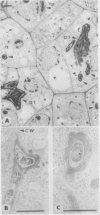Abstract
We evaluated the symbiotic phenotypes of nodulation-restrictive and normal soybean isolines by inoculating Clark (genotypically Rj1Rj1) and mutant Clark-rj1 (genotypically rj1rj1) seedlings in plastic growth pouches. Nodules first appeared on Clark seedlings inoculated with Bradyrhizobium japonicum USDA 94 after 6 days. The mean number of nodules per plant was 13.9 ± 0.8 after 24 days. In contrast, Clark-rj1 seedlings first nodulated at 12 days, and the mean number of nodules per plant was only 1.7 ± 0.3 at 24 days. Segments from infectible zones of primary roots, i.e. near the position occupied by the root tip at the time of inoculation, were sectioned serially. Clark roots contained cortical cell divisions and a few infection threads in question mark-shaped root hairs by 2 days after inoculation. Typical nodules developed soon thereafter. Analogous serially sectioned segments from Clark-rj1 roots lacked these responses. This prompted us to section nodules and adjacent tissues from other parts of Clark and Clark-rj1 roots. Clark roots contained cortical cell divisions, many associated with infected root hairs. Cortical cell divisions occasionally were present in Clark-rj1, and a few infection threads were visible in surface cells. The presence of infection threads within Clark-rj1 nodules was confirmed by transmission electron microscopy. Thus, although B. japonicum USDA 94 fails to elicit the wild-type spectrum of responses in the infectible zones of primary roots, it can infect Clark-rj1 via infection threads.
Full text
PDF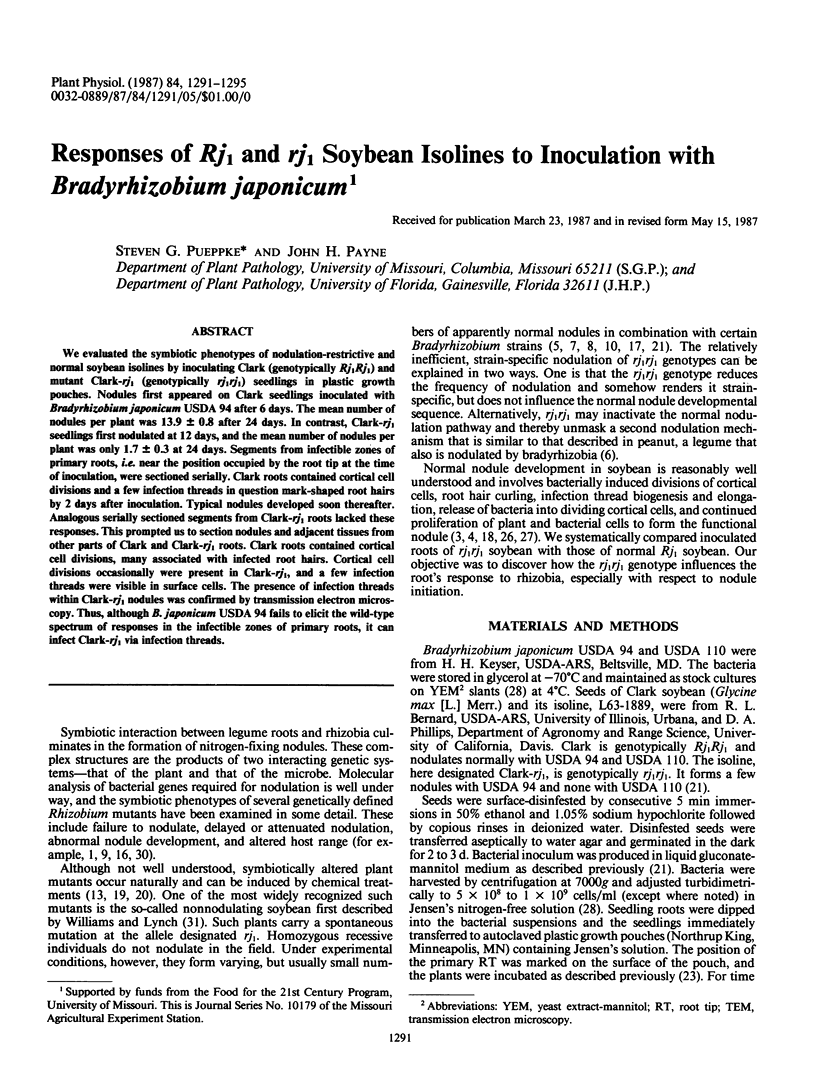
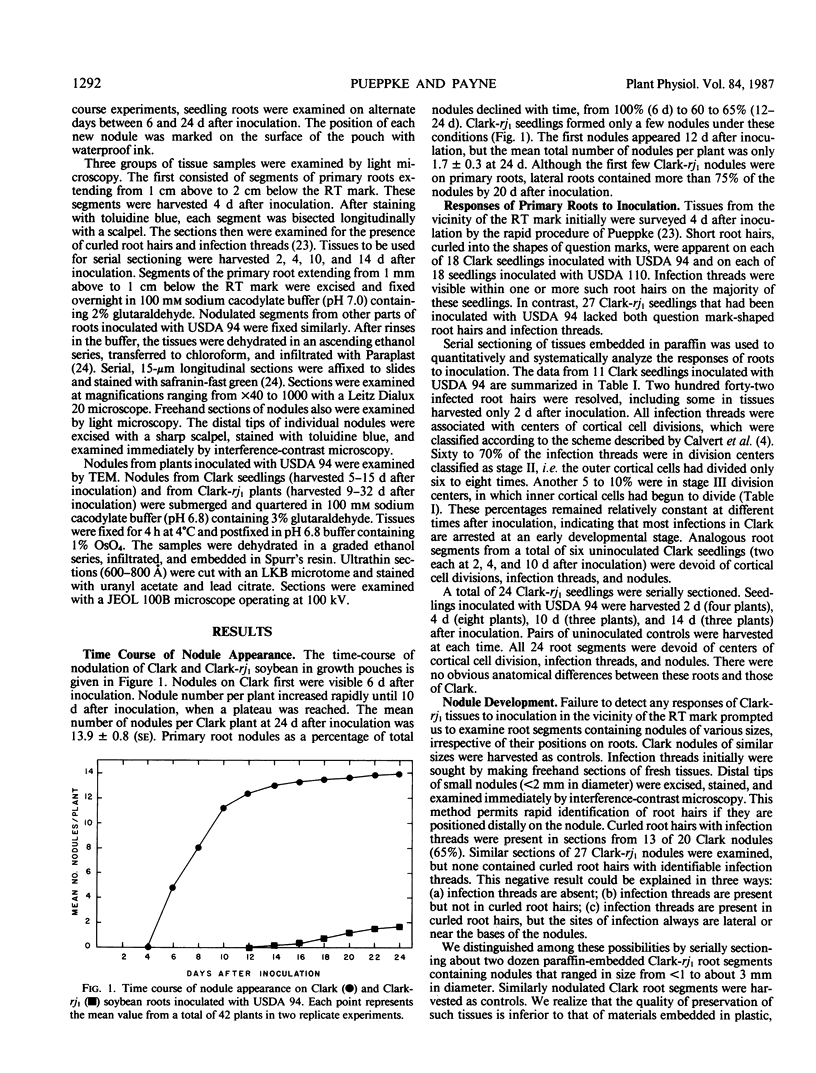
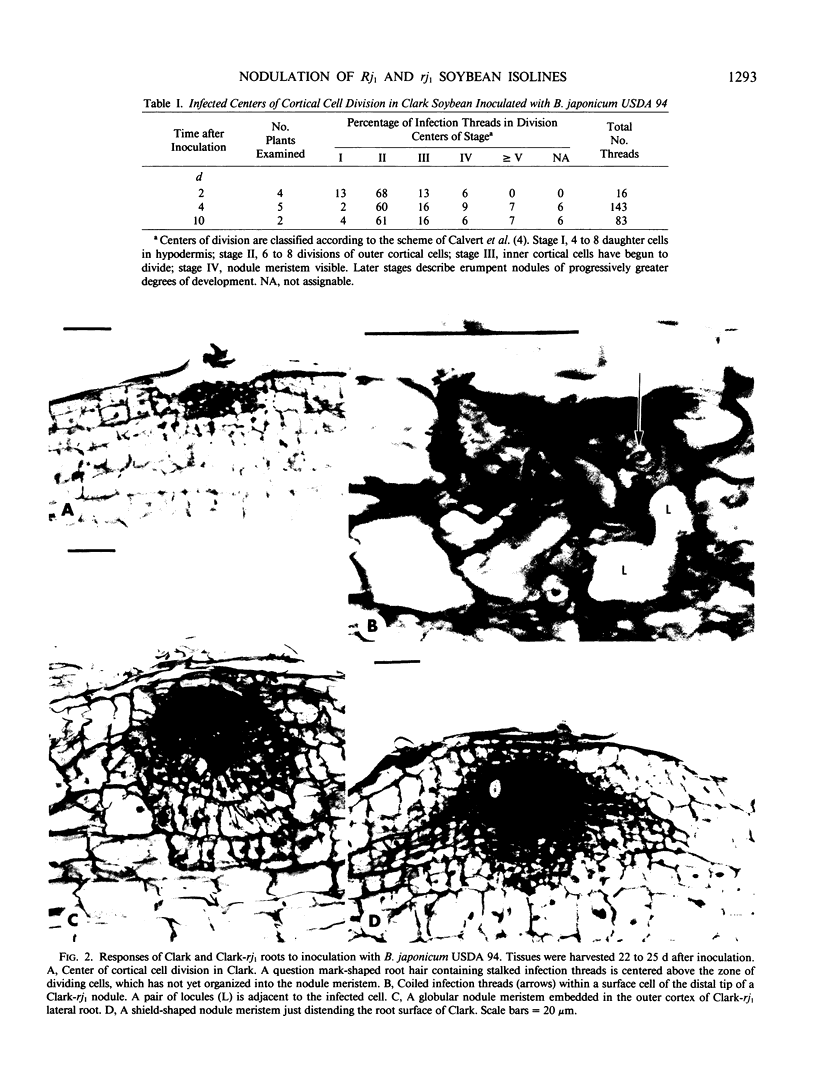
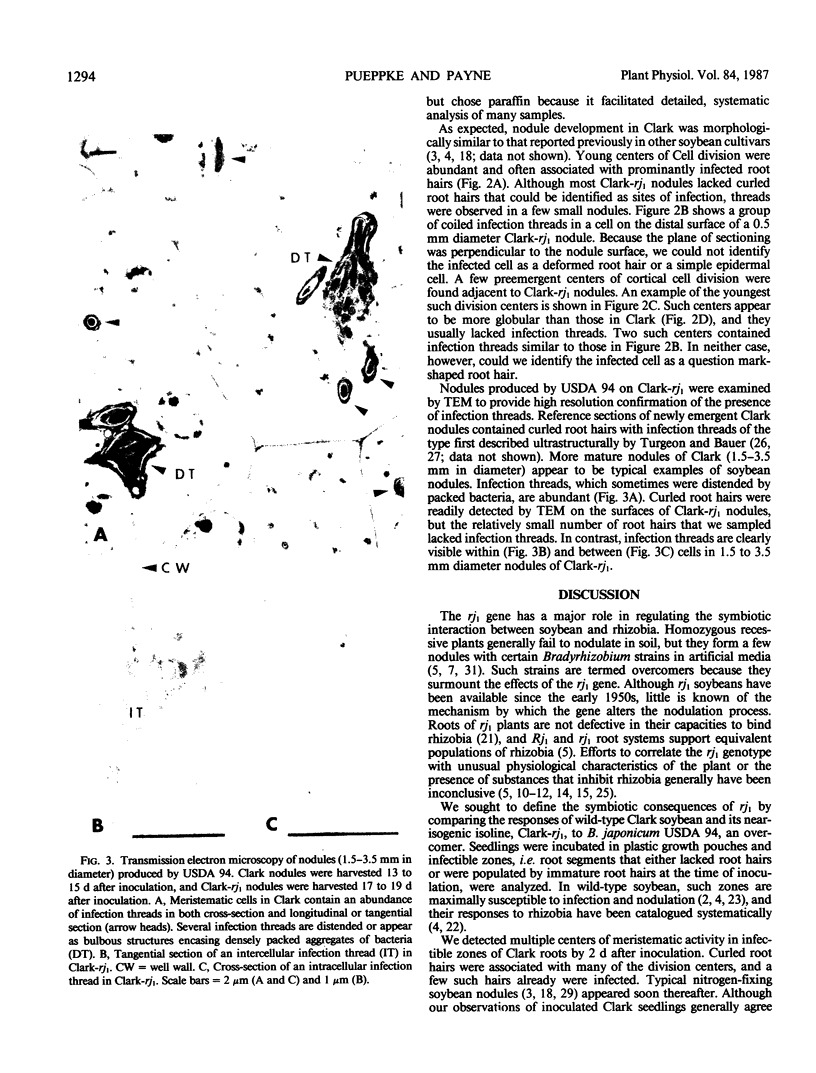
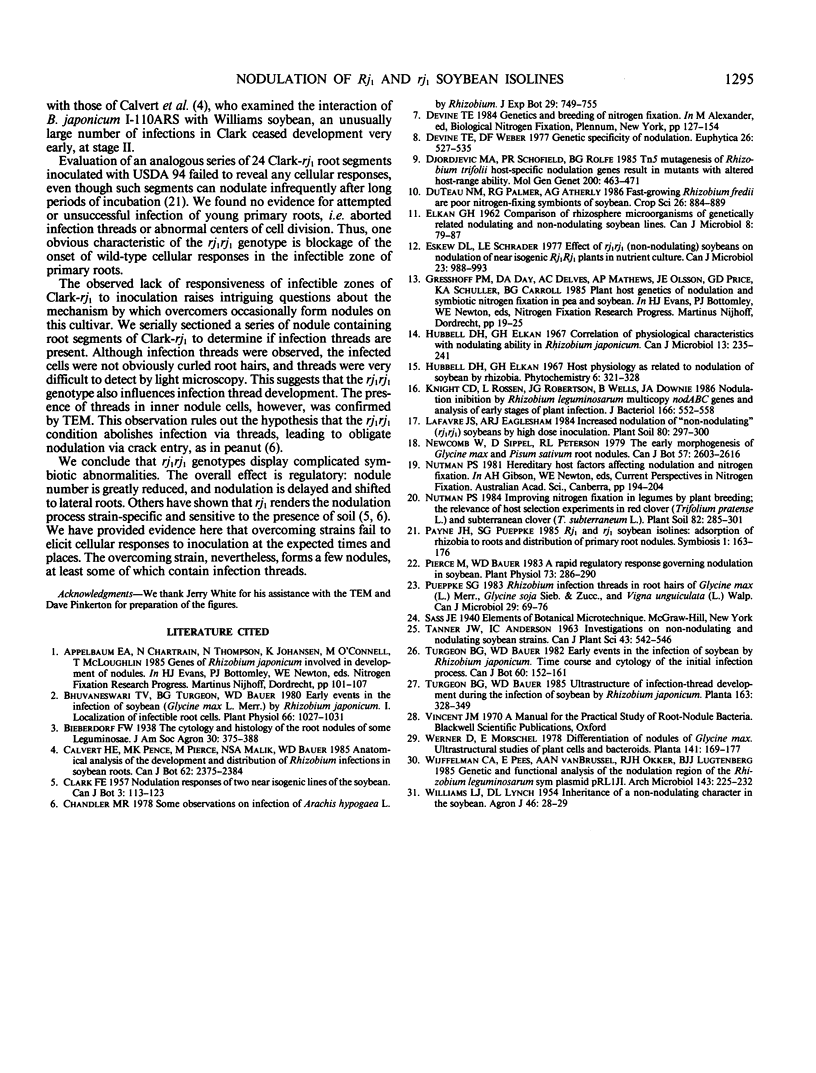
Images in this article
Selected References
These references are in PubMed. This may not be the complete list of references from this article.
- Bhuvaneswari T. V., Turgeon B. G., Bauer W. D. Early Events in the Infection of Soybean (Glycine max L. Merr) by Rhizobium japonicum: I. LOCALIZATION OF INFECTIBLE ROOT CELLS. Plant Physiol. 1980 Dec;66(6):1027–1031. doi: 10.1104/pp.66.6.1027. [DOI] [PMC free article] [PubMed] [Google Scholar]
- ELKAN G. H. Comparison of rhizosphere microorganisms of genetically related nodulating and non-nodulating soybean lines. Can J Microbiol. 1962 Feb;8:79–87. doi: 10.1139/m62-011. [DOI] [PubMed] [Google Scholar]
- Eskew D. L., Schrader L. E. Effect of rj1rj1 (non-nodulating) soybeans on nodulation of near isogenic Rj1Rj1 plants in nutrient culture. Can J Microbiol. 1977 Aug;23(8):988–993. doi: 10.1139/m77-147. [DOI] [PubMed] [Google Scholar]
- Hubbell D. H., Elkan G. H. Correlation of physiological characteristics with nodulating ability in Rhizobium japonicum. Can J Microbiol. 1967 Feb;13(2):235–241. doi: 10.1139/m67-030. [DOI] [PubMed] [Google Scholar]
- Knight C. D., Rossen L., Robertson J. G., Wells B., Downie J. A. Nodulation inhibition by Rhizobium leguminosarum multicopy nodABC genes and analysis of early stages of plant infection. J Bacteriol. 1986 May;166(2):552–558. doi: 10.1128/jb.166.2.552-558.1986. [DOI] [PMC free article] [PubMed] [Google Scholar]
- Pierce M., Bauer W. D. A rapid regulatory response governing nodulation in soybean. Plant Physiol. 1983 Oct;73(2):286–290. doi: 10.1104/pp.73.2.286. [DOI] [PMC free article] [PubMed] [Google Scholar]




